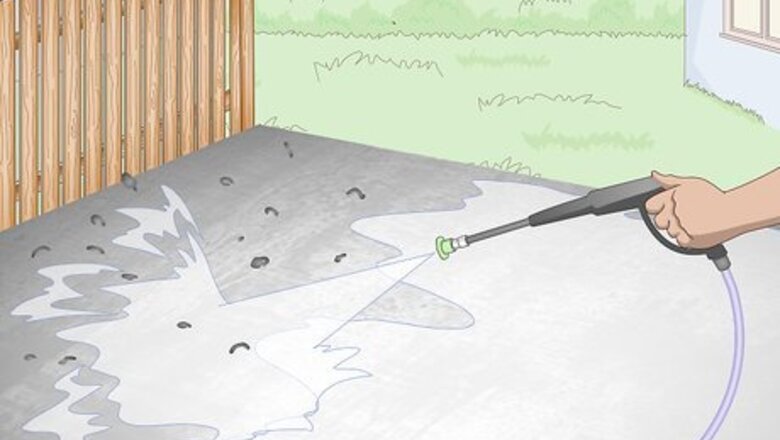
views
X
Expert Source
Alberto DeJesusConstruction Specialist
Expert Interview. 15 December 2021.
Besides being more cost-effective than replacing the slab, you can resurface your concrete in a single day. After cleaning the concrete with a power washer and filling in any large cracks, all you have to do is pour and smooth the resurfacer to hide any surface damage!
Cleaning the Concrete
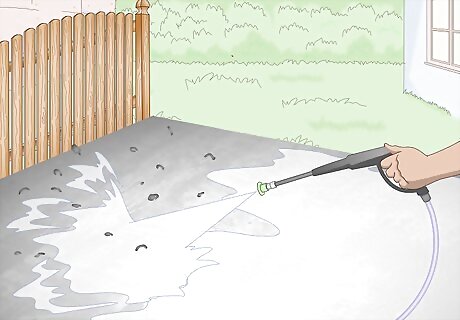
Use a power washer to remove dirt and loose concrete. Plug the power washer in, connect it to a water source, and turn on the machine using the switch. Hold the end of the power washer 3–4 inches (7.6–10.2 cm) from the surface of the concrete and pull the trigger to shoot out water. Use back and forth strokes to clean all of the concrete completely. Focus on areas where concrete is loose or deteriorating. Look for a power washer with a fan tip that reaches 3500 PSI to clean your concrete slabs. If you don’t have access to a power washer, you can get an attachment for your garden hose. Cleaning your concrete makes the resurfacer adhere better.
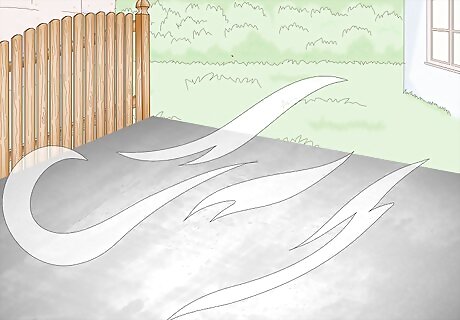
Let the concrete dry completely. Give the concrete 1-2 hours to dry after power washing it. When the surface of the concrete is dry to the touch, you can move on.
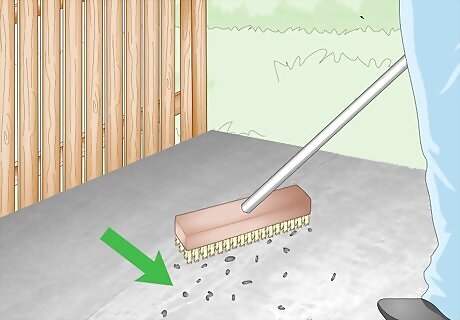
Sweep off the concrete with a stiff-bristled push broom. Once the concrete is dry again, sweep the rest of the dust and residue off with a push broom. Work in small areas at a time to clean off the area entirely before moving on. Resurface your concrete on the same day you clean it, or else dirt and dust will start to form again.Tip: Start in the middle of your concrete slab and work towards the outer edges. That way, you're always pushing the dirt and debris off of the slab rather than sweeping the same area multiple times.
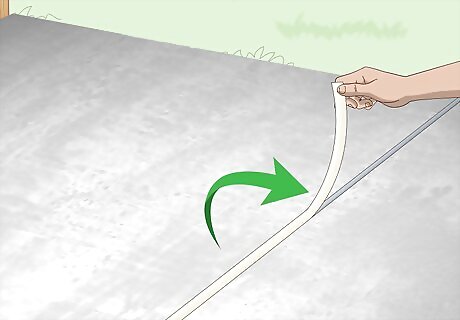
Cover control and expansion joints with weather stripping. Remove the backing from peel-and-stick foam weather stripping. Push the weather stripping into the cracks between your concrete slabs so the resurfacer doesn’t fill them in. Weather stripping can be purchased at your local hardware store. The expansion joints between slabs cannot be filled since they allow the slabs to shift naturally without cracking.
Filling in Large Cracks and Divots
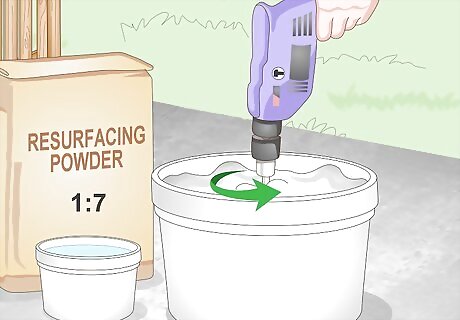
Mix 1 part water with 7 parts resurfacer using a drill and paddle attachment. Pour the resurfacer powder into a 5 US gal (19 L) bucket, then add the water. Use a paddle attachment on a corded drill to mix the resurfacer. Keep mixing the resurfacer until it has a thick consistency like cookie dough. Resurfacer can be purchased from your local hardware store. The amount of resurfacer you need depends on how many cracks and holes you need to fill. Start by mixing 1 cup (240 ml) of water with 3 ⁄2 pounds (1.6 kg) of resurfacer mix. Always wear rubber or nitrile gloves before touching the resurfacer. That way, it won’t dry on your skin.Tip: Resurfacer cannot be mixed by hand or in a barrel drum since it will not reach the right consistency.
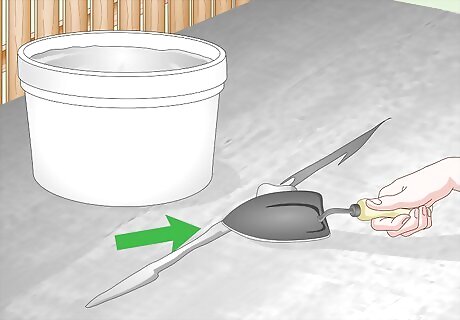
Fill the cracks with the resurfacer mix. Use a trowel to transfer the resurfacer onto your concrete. Press the resurfacer into the crack so it fills it completely and so there aren’t any air bubbles. Once the crack or divot is full, smooth out the top of the crack with a flat trowel so it lays flush with the rest of the slab. Cracks only need to be filled if they go more than halfway through the concrete slab. Avoid filling in the joints between slabs.
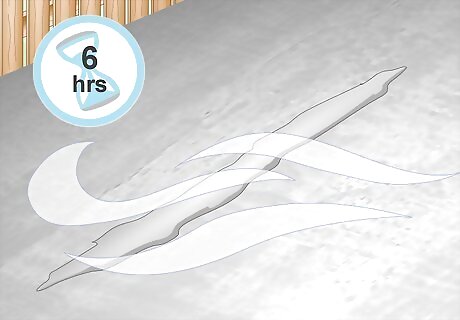
Let the patches dry for 6 hours. Don’t resurface the rest of your concrete until your patches are dry. In temperatures around 73 °F (23 °C), your patches should dry within 6 hours. Drying time may take longer depending on your weather conditions. Avoid using resurfacer then the temperatures are below 50 °F (10 °C) or if there’s a risk of freezing weather within 8 hours of applying it.
Applying the Resurfacer
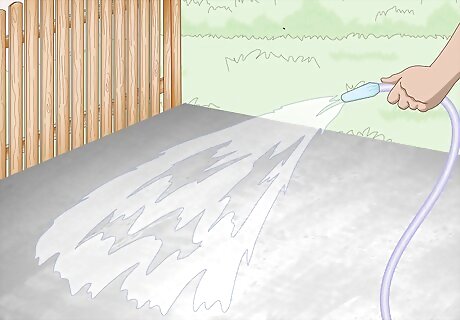
Mist the concrete so it’s damp. Use the misting attachment on your hose to wet the concrete. This prevents the concrete from absorbing the water from your resurfacer, which helps it adhere better. If there’s any standing water left on the concrete’s surface, push it off using a stiff-bristled broom. If you don’t have a misting attachment for your hose, you’ll just have more water to brush off at the end. Resurfacer cannot be mixed by hand or in a barrel drum since it will not reach the right consistency.
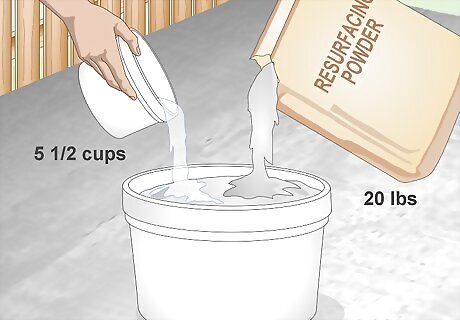
Mix 5 ⁄2 c (1,300 ml) of cool water with 20 lb (9.1 kg) of resurfacer. Pour the resurfacer mix and the water into a 5 US gal (19 L) bucket. Use the corded drill with a paddle attachment to blend the resurfacer together. This time, blend the resurfacer until it has the consistency of pancake batter. Keeping the water cold will slightly increase the working time for the resurfacer. If your mixture is too thick, add ⁄2 cup (120 ml) of water at a time to loosen it. If the mix is too runny, add ⁄2 pound (0.23 kg) of the resurfacer. This will cover 45 square feet (4.2 m) of concrete, so adjust the amounts as necessary for the area you intend to resurface.
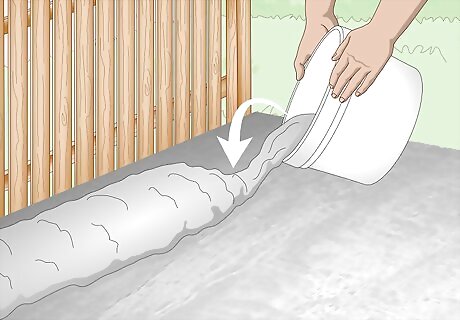
Pour the resurfacer in a small area on top of your concrete. Start at one end of your concrete slab and work your way toward the other end. Lift your bucket and pour all of the mixed resurfacer onto your concrete in a strip that’s 1 foot (0.30 m) wide by 6–8 feet (1.8–2.4 m) long. Keep the resurfacer at least 2 feet (0.61 m) away from the edge of the concrete slab so it doesn’t ooze off. Don’t pour more than 1 strip at a time since the resurfacer dries within 30 minutes.Warning: Do not fill in the joints between concrete slabs, or else they are at a higher risk of cracking over time.
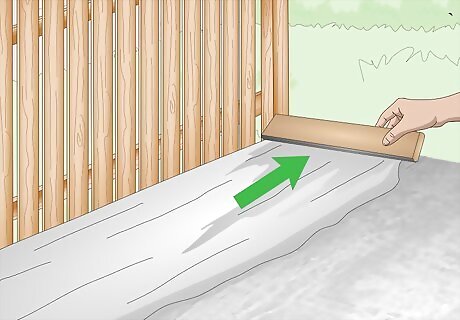
Spread the resurfacer evenly across your concrete with a squeegee. Use a long-handled squeegee to make a thin layer of the resurfacer. Work in back and forth motions until the resurfacer is smooth and between ⁄4–⁄2 inch (0.64–1.27 cm) thick. Do not cover the weather stripping in the joints between your slabs. Only work on an area that’s 144 square feet (13.4 m) or smaller so the resurfacer doesn’t dry before you’re finished. A bag of concrete resurfacer covers about 90 square feet (8.4 m). Keep a few extra bags of resurfacer handy in case you need to add more.
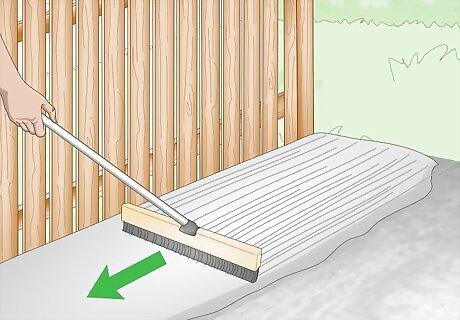
Brush across the surface with a concrete broom to add texture to the resurfacer. Smooth concrete can be slippery unless you add texture to it. After the resurfacer has been sitting for 5 minutes, drag a nylon-bristle concrete broom across the surface to create texture lines. Always brush in the same direction so the lines look neat and uniform. Concrete brushes are available to buy at your local home improvement or hardware store. Don’t use a regular broom since the resurfacer could get caught and dry in the bristles.
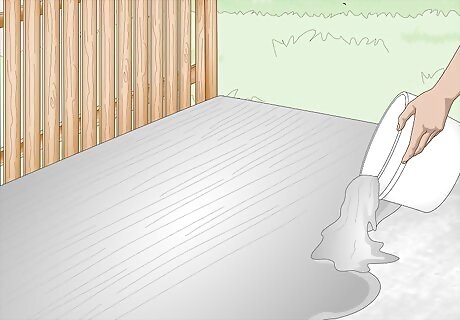
Pour resurfacer until you’ve finished your entire concrete area. Continue to pour strips of the resurfacer, working towards the edge of your slab. Squeegee the concrete until it’s smooth and level, then use your broom to add texture.
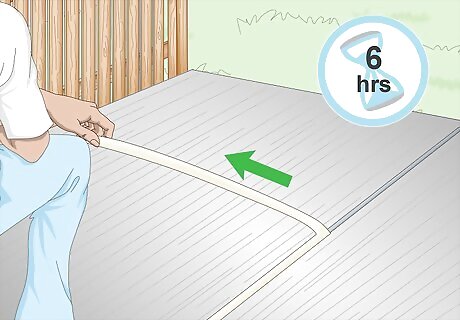
Let the resurfacer dry for 6 hours before walking on it and removing weather stripping. Stay off of the resurfacer until it’s completely dry, which usually takes around 6 hours. If the temperatures are lower than 73 °F (23 °C), the resurfacer may take longer to set. Pull the weather stripping out from the joints between your slabs. If you resurfaced a driveway or area with vehicle traffic, wait 24 hours before driving over it. If the temperature is higher than 90 °F (32 °C), mist the resurfacer twice per day to cure it.

















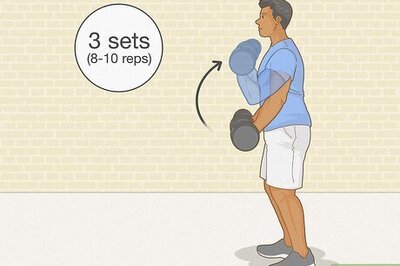

Comments
0 comment